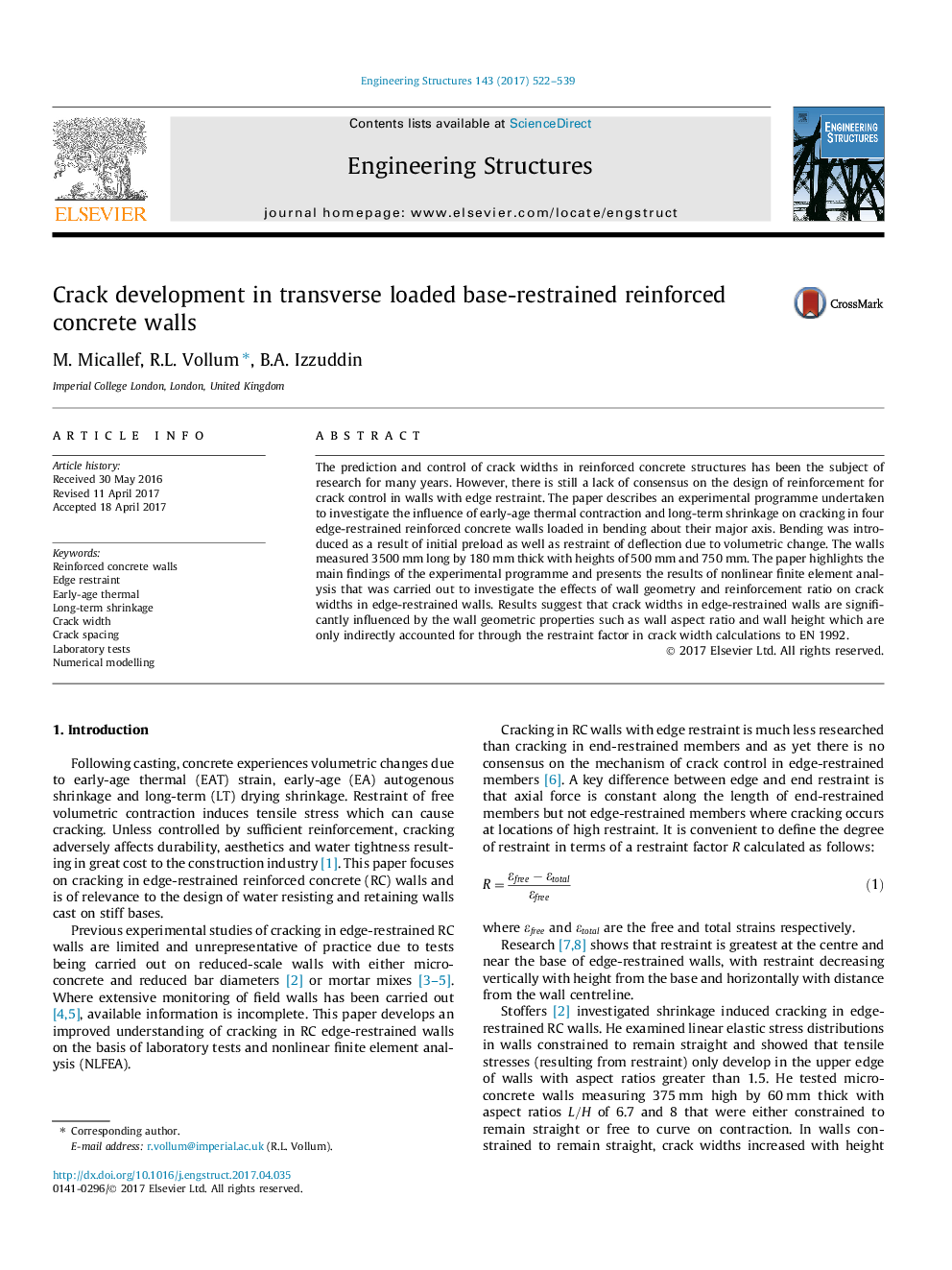| Article ID | Journal | Published Year | Pages | File Type |
|---|---|---|---|---|
| 4920088 | Engineering Structures | 2017 | 18 Pages |
Abstract
The prediction and control of crack widths in reinforced concrete structures has been the subject of research for many years. However, there is still a lack of consensus on the design of reinforcement for crack control in walls with edge restraint. The paper describes an experimental programme undertaken to investigate the influence of early-age thermal contraction and long-term shrinkage on cracking in four edge-restrained reinforced concrete walls loaded in bending about their major axis. Bending was introduced as a result of initial preload as well as restraint of deflection due to volumetric change. The walls measured 3500Â mm long by 180Â mm thick with heights of 500Â mm and 750Â mm. The paper highlights the main findings of the experimental programme and presents the results of nonlinear finite element analysis that was carried out to investigate the effects of wall geometry and reinforcement ratio on crack widths in edge-restrained walls. Results suggest that crack widths in edge-restrained walls are significantly influenced by the wall geometric properties such as wall aspect ratio and wall height which are only indirectly accounted for through the restraint factor in crack width calculations to EN 1992.
Related Topics
Physical Sciences and Engineering
Earth and Planetary Sciences
Geotechnical Engineering and Engineering Geology
Authors
M. Micallef, R.L. Vollum, B.A. Izzuddin,
